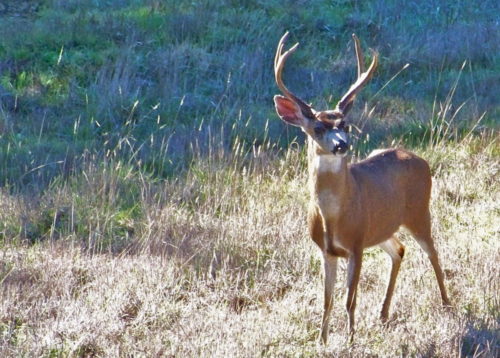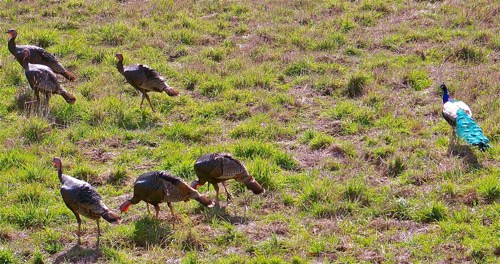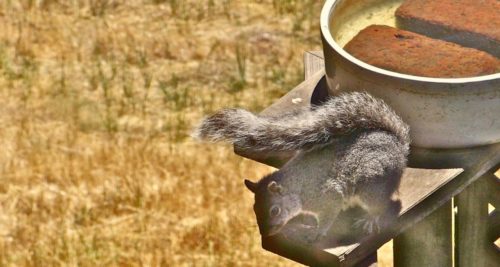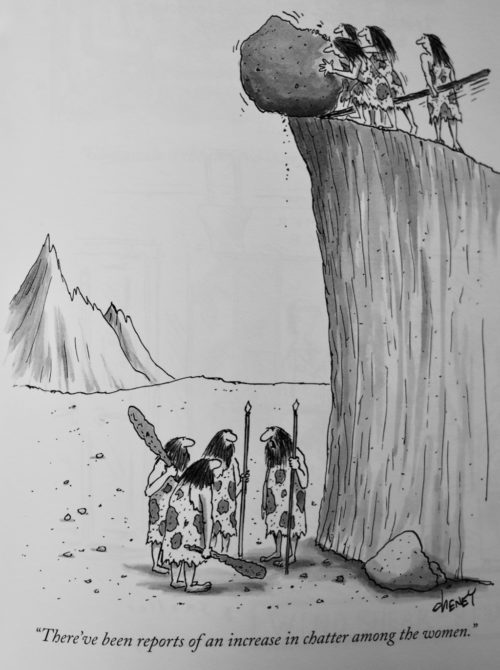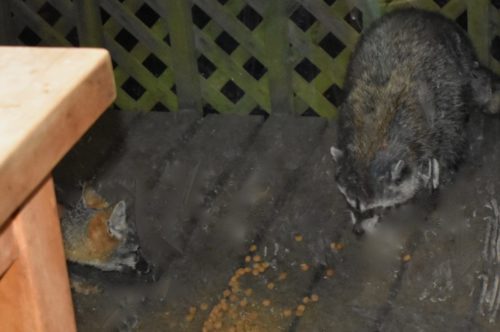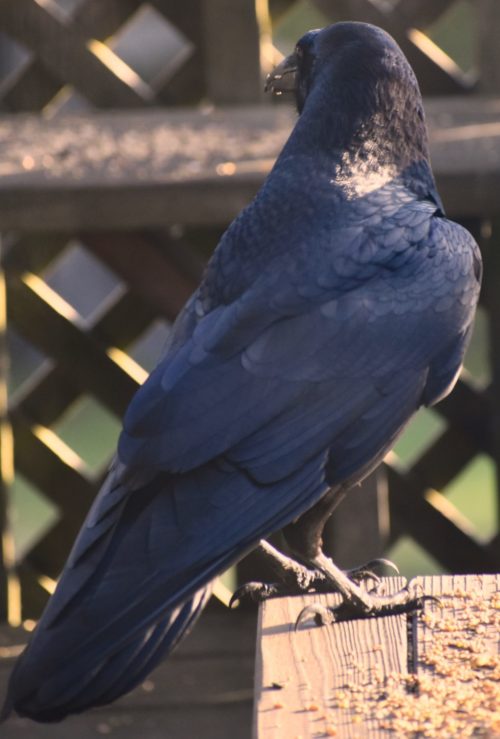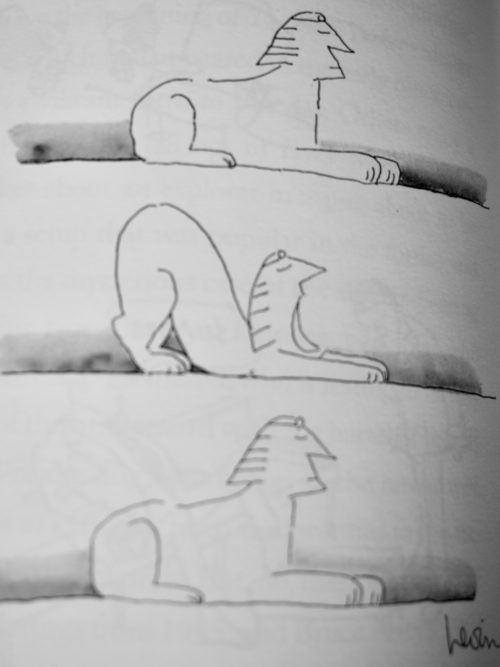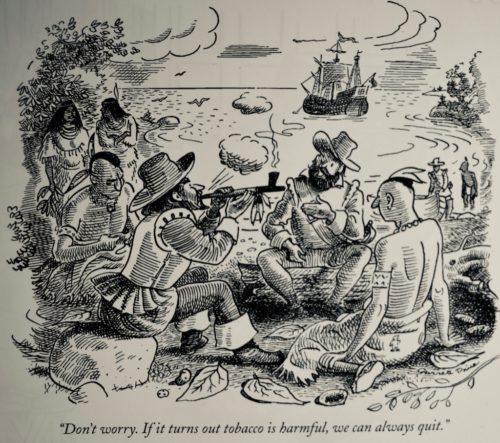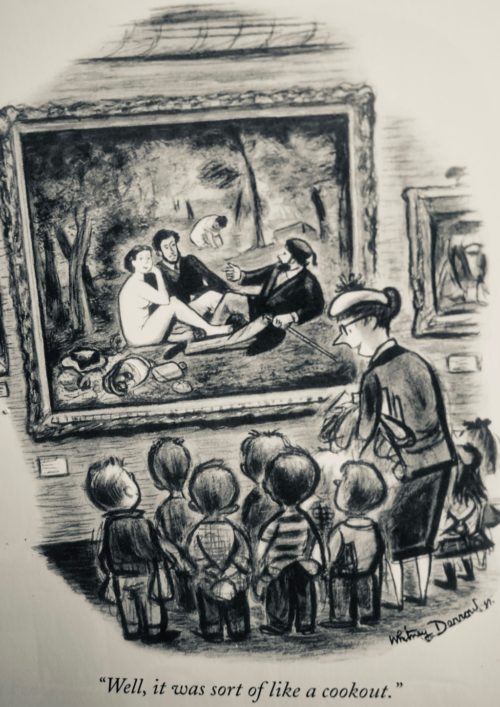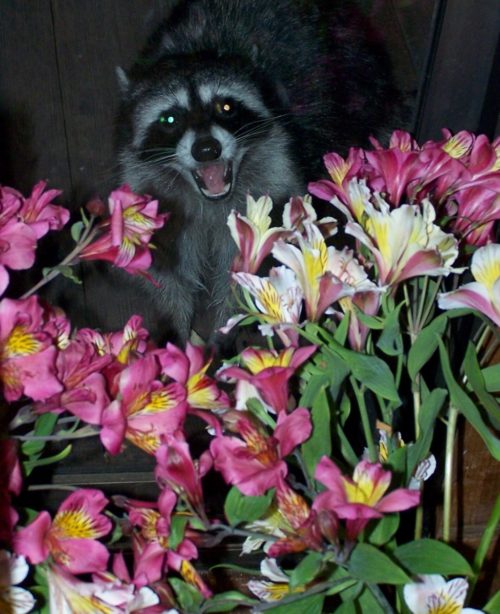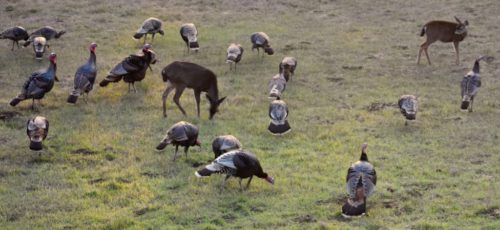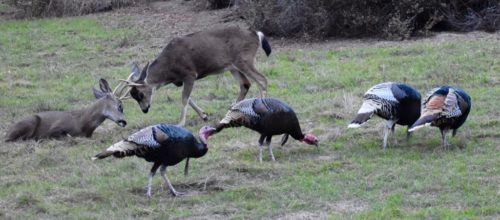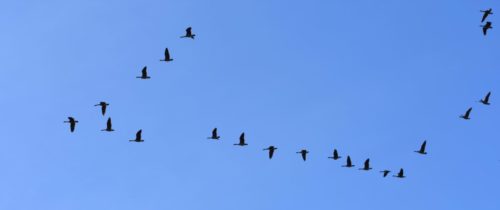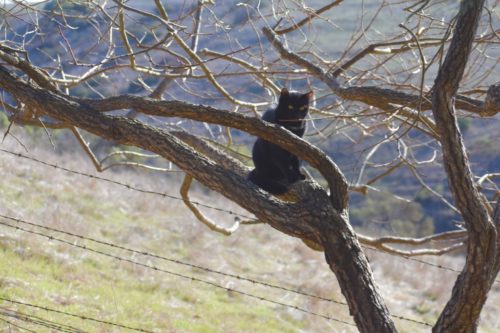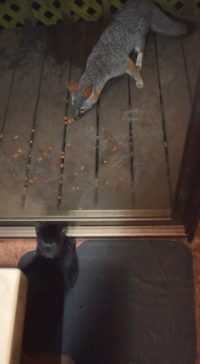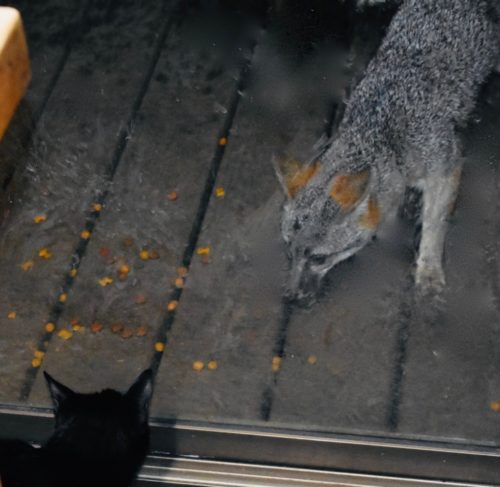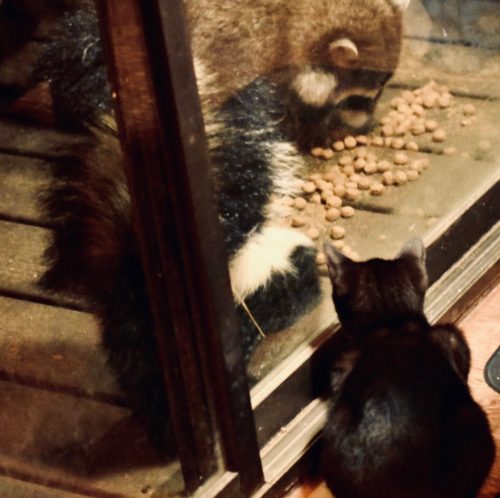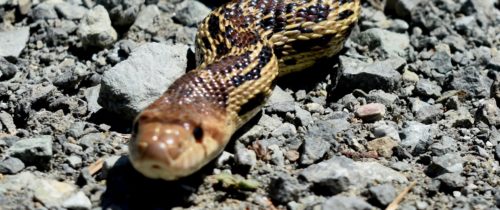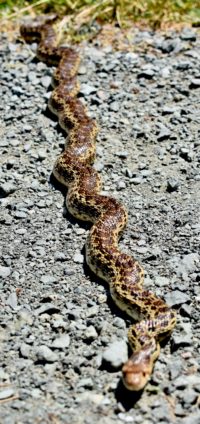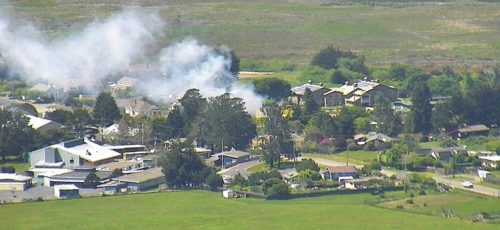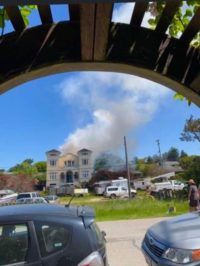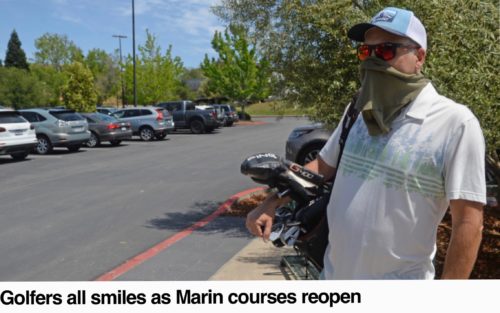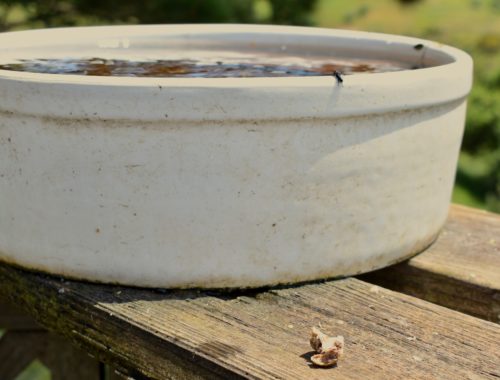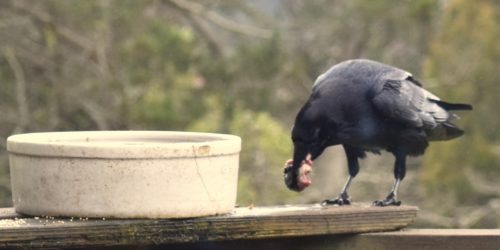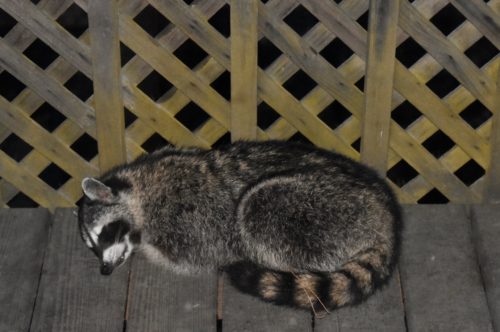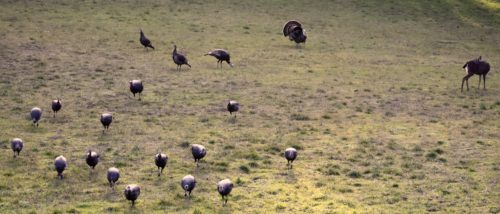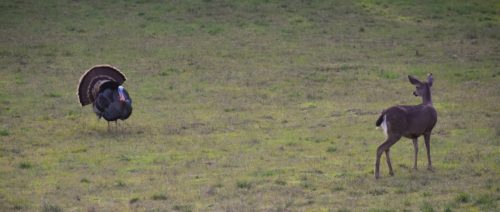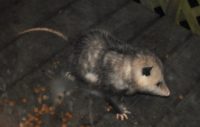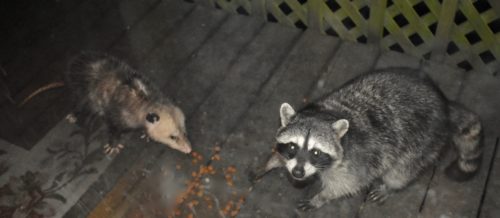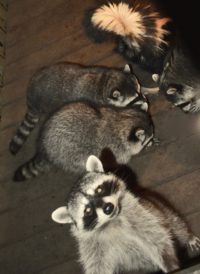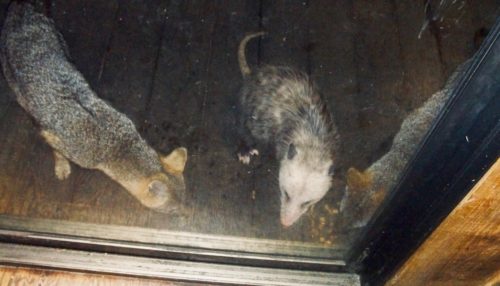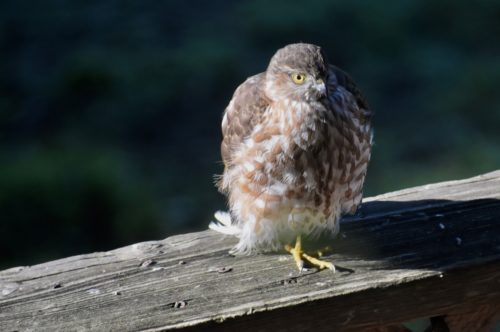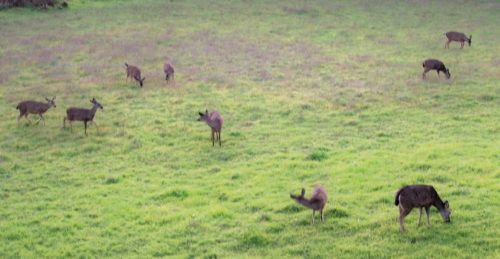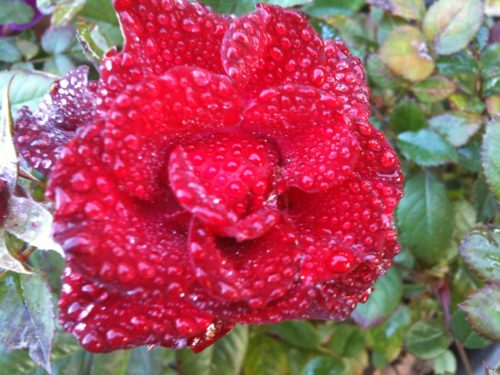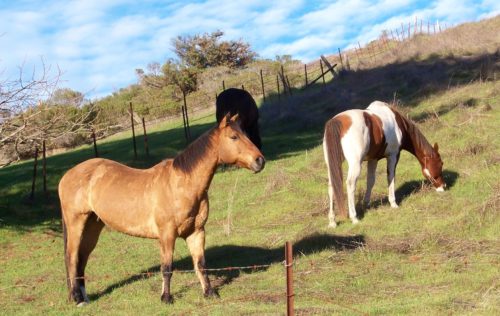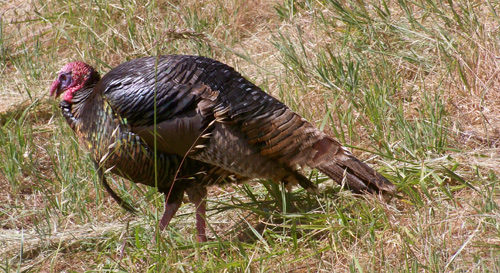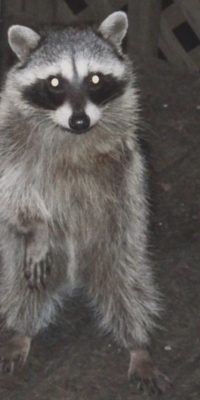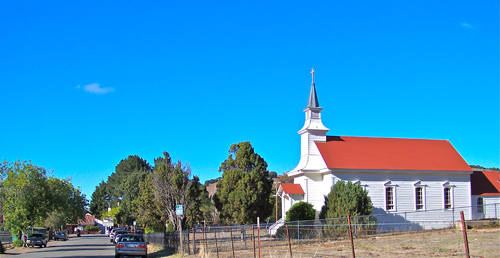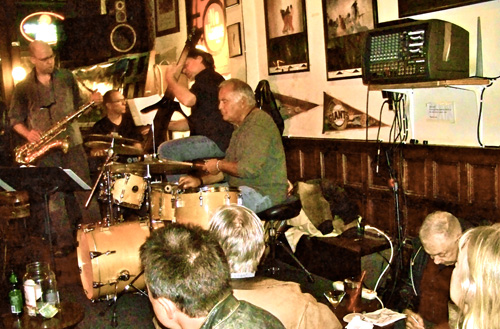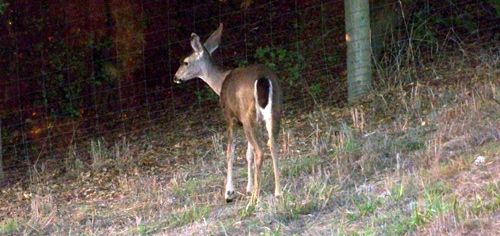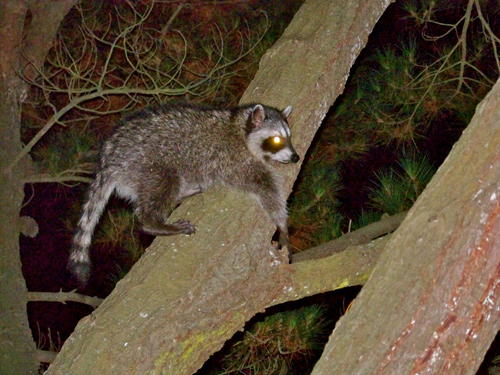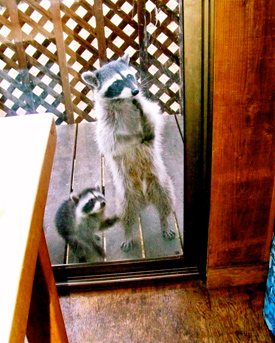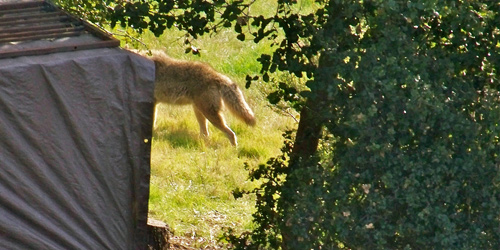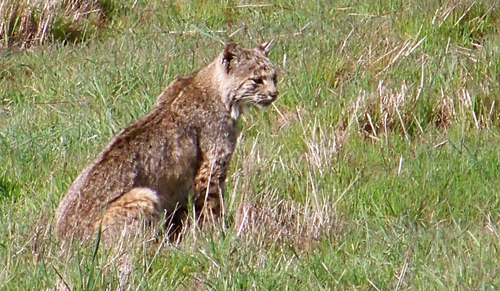Entries tagged with “raccoon”.
Did you find what you wanted?
Thu 17 Nov 2022
Posted by DavidMitchell under Photography, Politics, West Marin nature, Wildlife
Comments Off on Wildlife taking naps at Mitchell cabin
Despite the expectations of friends, I have little to say this week about the national election. I’m, of course, glad the predicted “red wave” never materialized and that Republican candidates who called the last presidential election “rigged” mostly lost. Now that Donald Trump has said he’ll be running for president again in 2024, I’m sure there will be plenty of malarky to write about in future postings, so I’ll wait and write about other beasts this week.
An old man, wrote Leo Tolstoy in War and Peace, used to say a nap “after dinner was silver — before dinner, golden.”

A cornucopia (i.e. horn of plenty) in the living room of Mitchell cabin symbolizes the harvest season and dinners to come.

A cottontail rabbit enjoys a golden nap after showing up in the field outside our bedroom window.

Outside our kitchen window, a sleepy blacktail buck enjoys a silver nap as well as a golden nap before resuming his grazing.

Later outside our living room window, a raccoon lay deep in a silver nap.
Fri 27 Aug 2021
Posted by DavidMitchell under Uncategorized
Comments Off on Where have all the badgers gone?
To get away from the present grim realities of human society, as were discussed here last week, this week we’ll take a few looks at the fascinating realities of the non-human society that’s seen around Mitchell cabin.

This past week, my wife Lynn spotted a bobcat in a persimmon tree next to our front steps. It’s not that we live in a literal zoo. Bobcats are fairly common here and elsewhere in Point Reyes Station.

Pouncing. A bobcat pounces on a gopher not far from our deck.
Coyotes. Predators even more noticeable are the coyotes. This one is looking at my parked car. Most nights the coyotes on this hill howl to establish territory. Contrary to widespread opinion, coyotes do not howl to announce a kill, for that would invite other coyotes to steal the prey.

Grey foxes are another set of predators we see fairly often. These are just outside the kitchen door scouring up the last of the kibble I had earlier given to some raccoons.

Badgers. Where did they go? When I first moved to this hill 45 years ago, there were a number of badger burrows. I spotted this pair one morning when I looked up from the breakfast table. They were easily visible on a nearby hillside. From their burrow’s entrance, the sow and cub were keeping an eye on the world. New badger holes used to be annual events here, but I haven’t seen a new one in five years or more.

Chipmunks are totally absent from our hill. This one apparently wandered over from Inverness Ridge a decade ago, but it didn’t stick around.

Gray squirrels can be a nuisance, and controlling them is an annual topic for discussion around here. The squirrels like to eat the cambium layer just under the bark on pines, often killing the ends of the limbs they munch on.
 The possums we see around here are Virginia Opossums, which are native to North America. Their lifespan is typically around four years. Possums are marsupials with counterparts found in Central and South America, New Zealand, and Australia.
The possums we see around here are Virginia Opossums, which are native to North America. Their lifespan is typically around four years. Possums are marsupials with counterparts found in Central and South America, New Zealand, and Australia.
To quote Wikipedia: “A marsupial is a mammal that raises its newborn offspring inside an external pouch at the front or underside of their bodies. In contrast, a placental is a mammal that completes embryo development inside the mother, nourished by an organ called the placenta.”

A jack rabbit in our backyard. As noted here before: “Jackrabbits were named for their ears, which initially caused some people to refer to them as ‘jackass rabbits.’ The writer Mark Twain brought this name to fame by using it in his book of western adventure, Roughing It. The name was later shortened to jackrabbit.”
Raccoons and skunks end up eating together so often they get along with each other fairly well.

A blacktail buck makes his daily appearance grazing beside Mitchell cabin. Of all the creatures I see, the bucks seem to have the most regal bearing.
Wed 16 Jun 2021
Posted by DavidMitchell under Uncategorized
Comments Off on Wild times continued during the lockdown
Caveat lectorem: When readers submit comments, they are asked if they want to receive an email alert with a link to new postings on this blog. A number of people have said they do. Thank you. The link is created the moment a posting goes online. Readers who find their way here through that link can see an updated version by simply clicking on the headline above the posting.
My wife Lynn dealt with the tedium of the shelter-in-place lockdown in part by watching British murder mysteries in the evening. I myself seldom watch TV and instead endured the lockdown by watching the wildlife around Mitchell cabin. Here’s what I’ve been seeing.

A raccoon and a gray fox got together for an ecumenical dinner outside our kitchen door Monday night. Raccoons can be aggressive when other raccoons try to horn in on their kibble snacks, but foxes and skunks get a free pass.

Wild turkeys are regular visitors to our fields, often accompanied by a lonely peacock whose screams sound like a woman crying out for help.

A stinky trio, three skunks march around the field above Mitchell cabin in tight formation.

Jackrabbits are showing up more as summer approaches.

A squirrel stops by our birdbath for a drink.

A roof rat and towhee have an ecumenical dinner of their own, quietly snacking on birdseed atop our picnic table.

The local bobcat walked downhill toward Lynn Monday while she was transplanting nasturtiums in our garden. When the bobcat saw her, it didn’t abruptly flee but merely trotted off into a neighboring field. My homeless friend, Billy Hobbs, tells of having an unconcerned bobcat walk quite close to him while he was sleeping along Papermill Creek near the Green Bridge. “I’ll bet it’s the same one,” he said Tuesday when I told him of Lynn’s encounter. (For the moment, Billy is being housed in Motel 6 at county expense.)

Other predators that keep us company are coyotes who howl for our entertainment more nights than not.
During the pandemic lockdown, enough people were staying at home that coyotes began more freely wandering about in nearby San Francisco, with experts estimating there are 40 to 70 of them.
Wed 14 Apr 2021
Posted by DavidMitchell under Uncategorized
Comments Off on Croak and humor
Caveat lectorem: When readers submit comments, they are asked if they want to receive an email alert with a link to new postings on this blog. A number of people have said they do. Thank you. The link is created the moment a posting goes online. Readers who find their way here through that link can see an updated version by simply clicking on the headline above the posting.

____________________________

I unknowingly carried a Western Fence Lizard, which had been hiding in our woodpile, indoors on a log last week. Unfortunately, our fireplace cost the lizard its tail and ultimately its life.
After I added a log to the fire one night last week, I noticed something squirming near it in the gray ashes. I checked. It was a lizard, and after several tries with gloves on my fingers, I managed to flip it out of the fireplace onto the floor, along with one red ash that singed a small spot on the carpet.
This species of lizard is known as a Blue Belly or Western Fence lizard, and the Blue Belly I’d just removed from the fire appeared to be dead. No movement whatsoever even when I picked it up. Since its flesh wasn’t burned, I guessed the lizard had passed out from the heat. I carried the creature to our kitchen sink and ran cold water over it. After a minute or so, the lizard seemed to be trying to move its legs. However, it couldn’t move them very much, so I treated it to some more cold water, laid it down on the counter, and gently straightened out its legs. After that the Blue Belly took a few steps before passing out again.
With no other ideas for resuscitating the poor critter, I put its lifeless body beside a geranium in a flowerpot on the deck. When I checked back the next day, the wretched reptile hadn’t left.
______________________________

This vulpine-raccoonish ecumenical dinner was celebrated Sunday at Mitchell cabin’s kitchen door.
Raccoons show up at Mitchell cabin’s front and kitchen doors every evening begging for kibble, and we normally give them a few handfuls. Skunks and foxes occasionally show up to share their repast.
Elsewhere in Marin, foxes can be suspect. The Marin Humane Society awhile back had to put down a rabid fox near Novato. As for raccoons: “Although raccoons suffer from rabies more than any other mammal in the United States (about 35 percent of all animal rabies cases),” the national Humane Society reports, “only one human death from the raccoon strain of rabies has been recorded in the United States.”
_________________________________

A croaker on a bench at Mitchell cabin Wednesday.
An easy way to tell a raven from a crow is that ravens croak whereas crows caw. Easier yet, the tails of ravens are wedge shaped while the tails of crows are fan shaped. Easiest of all, only the ravens squawk, “Nevermore,” if you call out the name Lenore.
_______________________________

Tue 9 Feb 2021
Posted by DavidMitchell under Uncategorized
Comments Off on Humor to make Valentine’s Day on Sunday even happier

Happy Valentine’s Day from the Canada Geese at Mitchell cabin.
____________

The behavior of a crazed loser did not originate with Donald Trump, as this 1982 New Yorker cartoons illustrates.
_________

Formal debate had already begun replacing aggressive prosecution in another 1982 New Yorker cartoon. I had considered the gladiators-versus-lions in the Roman Coliseum the ultimate high-stakes event. It never occurred to me a lion might have to to impeach a histrionic gladiator who had overindulged his sense of entitlement.
_________

As noted here before, my obligation to encourage wildlife a few years back led me to teach this possum dining etiquette. You could safely invite him in for your Valentine’s Day dinner. He’s certainly no Covid-19 carrier.
_________

Is this a Senate committee hearing or just another hungry-and-thirsty American in search of sustenance?
_________

___________

__________

From a 1958 New Yorker
__________

As part of my program to refine wildlife, I once mentored a bodhisattva possum on its path to enlightenment.
__________

What was Edouard Manet picturing in Le Déjeuner sur l’herb’? Lunch on the grass.
__________

__________

And a hearty Happy Valentine’s Day! from the raccoon I’ve trained to work as a flower vendor and who, I might add, would be only too happy to provide the bouquet for your celebration.
I hope all this provided a ray of sunshine in these semi-dark times.
Sat 19 Dec 2020
Posted by DavidMitchell under Uncategorized
Comments Off on Species intermingling
Located on a grassy hillside, Mitchell cabin is constantly in the midst of various wildlife: at least 40 species and subspecies of birds, along with various snakes, lizards, salamanders, frogs, deer, skunks, coyotes, raccoons, foxes, gophers, roof rats, field mice, squirrels, cottontails, jack rabbits (which are actually hares), bobcats, and the occasional badger.
I’m always impressed by how often the different species manage to get along with each other.

A flock of wild turkeys casually wander past a couple of grazing deer.

The turkeys, in fact, are so indifferent to the deer that when a young buck challenges a weary companion, they don’t even notice.

And even when the two bucks start actually sparring, the turkeys just continue their hunting and pecking.

A flock of Canada geese fly overhead honking as they go.

Add a domestic cat to this mix and the wildlife come to resemble zoo animals. Here Newy, the stray cat we adopted last summer, climbs a persimmon tree to take it all in. Last week’s posting showed her in the grass interacting with deer and wild turkeys.

Many of Newy’s wildlife displays, however, present themselves at our kitchen door. Here she studies a gray fox eating dog kibble left behind by raccoons.

The fox soon spots Newy but just gives her a quick glance.

Newy was traveling with several raccoons when she first showed up in late July. A veterinarian, who later spayed her and trimmed her claws, estimated her age as five to six months. While she enjoys keeping an eye on her raccoon friends, the unfamiliar skunks particularly fascinate her. Like the fox, a couple of skunks regularly show up to enjoy the last of the raccoons’ dinner. For her, the scene is all part of the zoo in which she finds herself now living
Fri 8 May 2020
Posted by DavidMitchell under General News, History, Point Reyes Station, West Marin nature, Wildlife
Comments Off on Surprises in a quiet fortnight

Well, hello there. In West Marin, the past couple of weeks have been full of surprises, such as this inquisitive gopher snake which greeted me as I headed down the driveway Thursday.

It was a good-sized snake, more than four feet long. The snake eyed me as I leaned over it but made no attempt to slither off.

Smoke from a fire at the old Foresters Hall in Point Reyes Station drifted over the town on Friday, April 24. The blaze damaged the northeastern exterior of the landmark, including a porch and staircase. Water damage to two apartments forced the tenants to move out. (Marin County Fire provided this photo)

The Foresters of America, a benevolent group, opened a chapter, Court No. 219, in Point Reyes Station in 1905. Its members began designing the hall in 1916. When I arrived in West Marin 45 years ago, the building was called the Sandcastle Gallery, which Jeanne Booras and her husband Bill operated. Kathryn de Laszlo and Stephen Marshall of Petaluma now own the building. The cause of the fire has not yet been determined. (Sheriff’s artistic photo)
Another surprise. Sheriff’s deputies in Bolinas on Sunday, April 27, arrested a bicyclist allegedly toting bags of methamphetamine and armed with a loaded revolver, as well as multiple knives, on charges he had just stabbed a friend during an argument. The suspect, Derek James, 39, of Bolinas was jailed with bail set at $50,000.

Last week, Marin County eased the coronavirus lockdown enough at golf courses to allow residents here to play but with groups limited to two people. No doubt many golfers were happy, but evidence for the Marin Independent Journal’s headline was hard to spot in its photo of golfer Nate Siedman from Bolinas.

A small bone surprised us by showing up beside our birdbath Wednesday, and I’m fairly sure a raven brought it there for rinsing. From appearances, it is a chicken bone probably found in someone’s garbage.

For a few years now, ravens have occasionally used our birdbath for preparing dinner. Here a raven brings a mouse’s head to the birdbath for washing.

Obviously feeling at home, raccoons often take naps on our deck at night, which makes us feel, surprise, like housemates.
Caveat lectorem: When readers submit comments, they are asked if they want to receive an email alert with a link to new postings on this blog. A number of people have said they do. Thank you. The link is created the moment a posting goes online. Readers who find their way here through that link can see an updated version by simply clicking on the headline above the posting.
Wed 19 Feb 2020
Posted by DavidMitchell under Photography, West Marin nature, Wildlife
Comments Off on Some of the critters that have been visiting here of late
Caveat lectorem: When readers submit comments, they are asked if they want to receive an email alert with a link to new postings on this blog. A number of people have said they do. Thank you. The link is created the moment a posting goes online. Readers who find their way here through that link can see an updated version by simply clicking on the headline above the posting.
Needing a break from the political scene, I spent much of the past week photographing the critters that show up at Mitchell cabin.

Eleven blacktail deer grazing near Mitchell cabin last Saturday.

Following the deer up the hill were 21 wild turkeys.

Which led to an unusual stare-down.

For almost three years there’d been a dearth of possums around Mitchell cabin, but this past week two showed up on our deck after dark to nibble kibble.

Here a possum and raccoon dined together with no confrontations Sunday evening.

Raccoons, of course, are fairly comfortable around a number of other animals. Here four of them ate kibble alongside a skunk last fall.

And here a possum dined contentedly between two gray foxes just outside our kitchen door awhile back.

But the most integrated dining I have seen were this possum, fox, and raccoon, which I photographed together next to the kitchen door in 2011.

Monday morning Lynn woke me up so I could see this sharp-shinned hawk on the railing of our lower deck. The young hawk’s expression is mighty stern, and I fear it may be hunting the birds that show up on our upper deck to eat birdseed. (Photo by Lynn Axelrod Mitchell)
In short, not all wildlife live in harmony around here.
Tue 27 Dec 2016

When I drove up to Mitchell cabin last Wednesday, nine blacktail deer were grazing in the front meadow.
It’s common to have deer in my fields. Nine was the most in recent months although in times past I’ve had as many as 16.

Jackrabbits are also more abundant at present than they’ve been for a while.
The rabbits appear fairly comfortable around the deer, and it’s not uncommon to see them grazing side by side.
Unfortunately, cars and trucks take a toll on both the deer and the rabbit populations, so please keep an eye out for them when driving, especially at night. (Photo by Lynn Axelrod)

The rain we’ve been having in Point Reyes Station certainly enhances the scenery.
Here a tea rose on our deck sparkles with droplets after a wet morning. (Photo by Lynn Axelrod)

Horses grazing next to Mitchell cabin don’t seem to mind chilly weather, but on truly cold days, the folks at Point Reyes Arabians outfit them all with horse blankets.

Having escaped another yuletide feast, a wild turkey takes a leisurely stroll beside the cabin.
Perhaps the most emotionally compelling critter around Mitchell cabin this yuletide has been a young, three-legged raccoon that started showing up here in November. My partner Lynn was concerned about the little guy and soon named the raccoon “Peanut” because it was the runt of the litter. Maybe it hadn’t been getting enough to eat. We don’t know how Peanut lost his front-left leg. Perhaps in a fight with another raccoon. When we first noticed him, all that was left of the leg was a bloody spot.

By now the injury has healed over, and Peanut manages to get around fairly well with only three legs. He’s able to climb trees and even the lattice along our deck.
The name Peanut, however, periodically makes me chuckle. As it happens, back in the 1980s, I was part of a group that studied Spanish one evening a week in the old Dance Palace. Meeting at the same time elsewhere in the building were Mexican immigrants learning English.
Once when two of the instructors were to be away for a week, they arranged for the Spanish-speaking students to teach us English-speaking students Spanish and vice versa.
The approach was fairly straight forward. A Spanish-speaking student who was already fairly fluent in English would tell one of us the meaning of a Spanish word and then have the student use it in a sentence. When it was my turn, the woman conducting the class gave me the word cacahuetes, and I was immediately flustered when heard her say it meant “penis.”
I could pronounce ka-ka-wah-tays, but that wasn’t the problem. I now had to use the word in a Spanish sentence without embarrassing myself in front of the class. Then it struck me. The Marin Community Foundation had just awarded a $5,000 grant to a Stinson Beach filmmaker who was producing a physiological study titled Dick. “A Stinson Beach man is making a movie about cacahuetes,” I said in Spanish. The teacher looked surprised but quickly moved on.
When I got home from class that night, I told my then-wife Cynthia, “You’ll never guess what word they taught us tonight…. cacahuetes. Cynthia, who spoke Spanish fairly well, looked puzzled and asked, “What’s unusual about peanuts?”
Happy New Year!
Tue 11 Nov 2014
Marin County, and especially West Marin, have come to seem like a coastal refuge after last week’s Congressional elections, the conundrum of ISIS, California’s drought, and Stanford’s losing to Michigan State in the Rose Bowl.
In order to provide a respite from this world of troubles, I’m presenting this week a collection of happier scenes from around Marin.

St. Mary’s Catholic Church on Nicasio Square. Using locally milled redwood, townspeople in 1867 built the church for $3,000 (about $48,000 in today’s money).
I spent some time in Nicasio late last month, attending the opening of the new Nicasio Historical Society Museum and MALT Day at Nicasio Valley Farm’s Pumpkin Patch. While walking around the square, I was again struck by how unexpectedly well the New England architecture of several buildings fits with the old-west architecture of others, such as the Druid’s Hall and Rancho Nicasio.

Rob Roth on sax, KC Filson on piano, Pierre Archain on bass, and Michael Aragon on drums at the No Name bar in Sausalito. At far right, prominent Sausalito artist Steve Sara sketches the scene.
Last Friday evening, Lynn and I again ended up at the No Name bar, where we often go on Fridays. That’s the night the Michael Aragon Quartet performs modern jazz, much of it in the vein of John Coltrane and Cannonball Adderley.
When the quartet performed Adderley’s Mercy, Mercy, Mercy a month ago, they inspired me to see what I could find out about the late sax player (1928-75). Perhaps the most-intriguing trivia I turned up was the origin of his name.
Here’s the story. Julian Edwin “Cannonball” Adderley, a hefty man, already had a voracious appetite by the time he reached high school, and this led his classmates to call him “Cannibal.” The distinction between cannibals and cannonballs is, of course, so minor that most of the public didn’t notice when Adderley evolved from one into the other. __________________________________________________________________

The view out our bedroom window Sunday of a horse from Point Reyes Arabians grazing in the neighboring pasture.
_____________________________________________________________________

Doe, a deer, a blacktail deer. Ray, a drop of golden sun…. A young deer in a spot of sunlight outside our kitchen window last week pricked up her ears as if the hills were alive with the sound of…. ?

Wild turkeys and deer coexist surprisingly well at Mitchell cabin. Obviously neither looks threatening to the other. The biggest dangers to them come from cars and hunters.

In the pine tree, the mighty pine tree, the raccoon sleeps tonight. In the pine tree, the quiet pine tree, the raccoon sleeps tonight. Wimoweh, wimoweh, wimoweh, wimoweh…. ________________________________________________________________
 A mother raccoon and her kit at our kitchen door.
A mother raccoon and her kit at our kitchen door.
Young raccoons are recognizable by the time we get to see them notwithstanding their having been delivered in kit form.
___________________________________________________________

Lynn and I hear coyotes around the cabin every few days, but we seldom get to see them. Here a coyote takes cover behind our woodshed.

The sloe-eyed coyote emerges from behind a clump of, appropriately enough, coyote brush. Coyotes are close relatives of gray foxes.

Keeping an eye out (and ears up) for coyotes and other predators, a jackrabbit sits in the field outside our kitchen window.

Among the other predators around here are bobcats. They don’t try to stay out of sight, but they trot off when they see humans.

And then there are the gray foxes. They live and breed on this hill, and until recently would show up at the kitchen door most evenings hoping to be fed just about anything: bread, nuts, dog food, whatever.
The foxes still show up occasionally in the afternoon to sun themselves atop the picnic table on our deck. Their nighttime visits, however, have come to an end for now, and I miss their vulpine partying.
Tags: blacktail deer, coyote, FC Filson, gray fox, jackrabbit, Michael Aragon, No Name Bar, PÃerre Archain, raccoon, Rob Roth, St. Mary's of Nicasio, Steve Sara, wild turkey

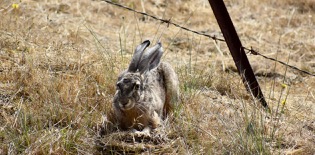
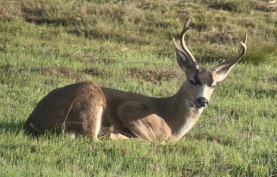



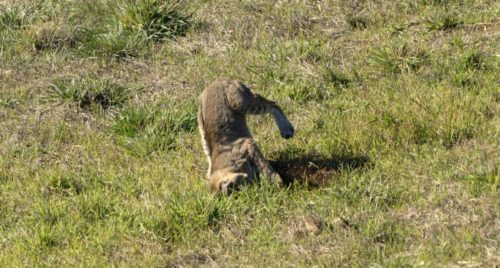
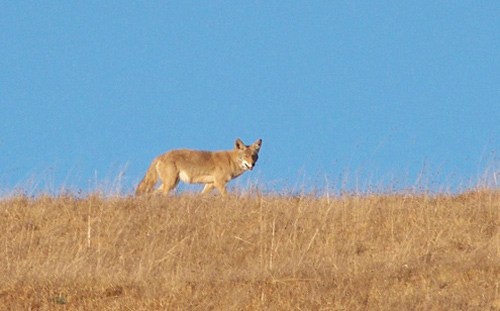

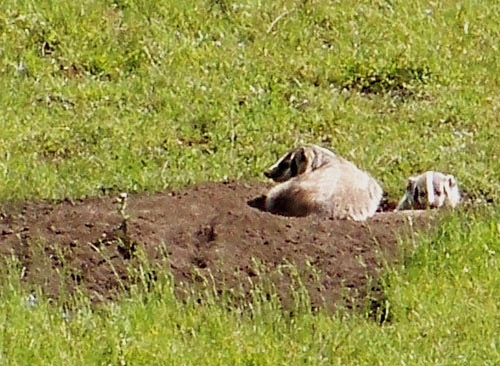

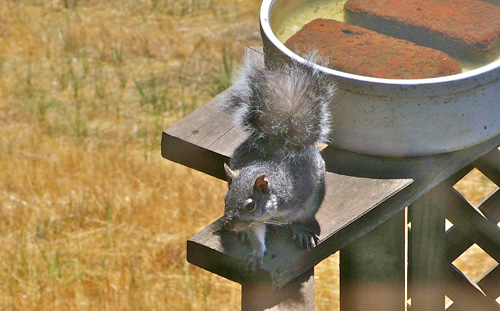
 The possums we see around here are Virginia Opossums, which are native to North America. Their lifespan is typically around four years. Possums are marsupials with counterparts found in Central and South America, New Zealand, and Australia.
The possums we see around here are Virginia Opossums, which are native to North America. Their lifespan is typically around four years. Possums are marsupials with counterparts found in Central and South America, New Zealand, and Australia.

